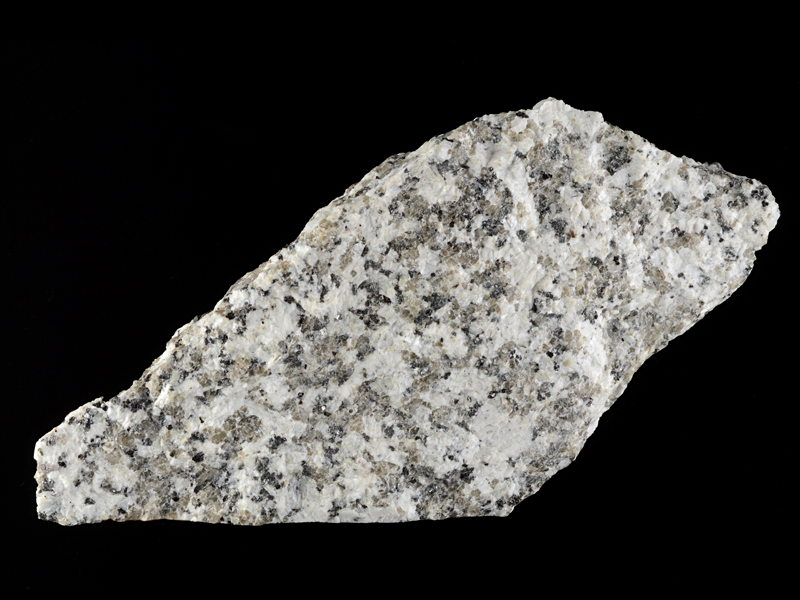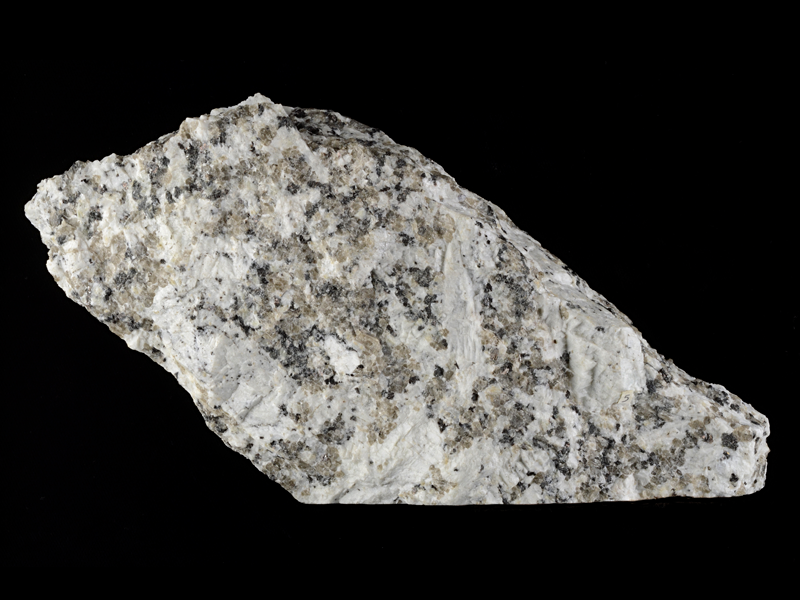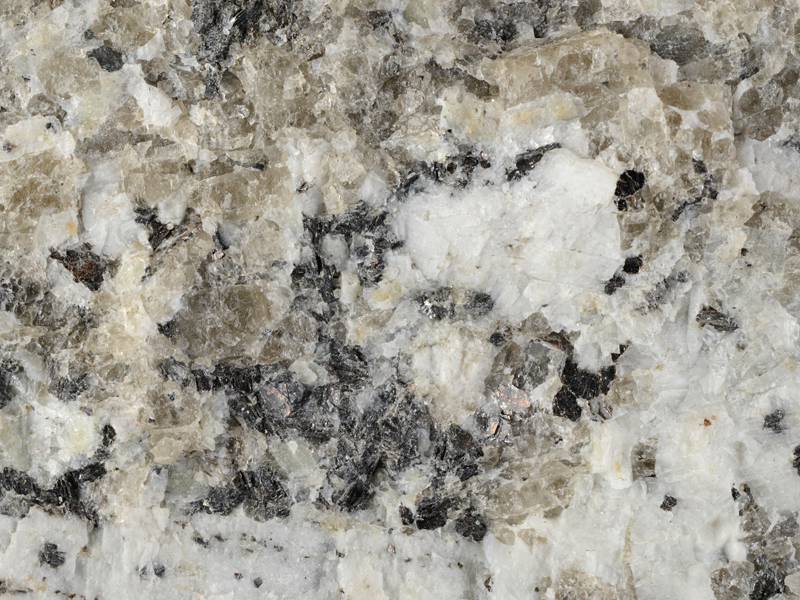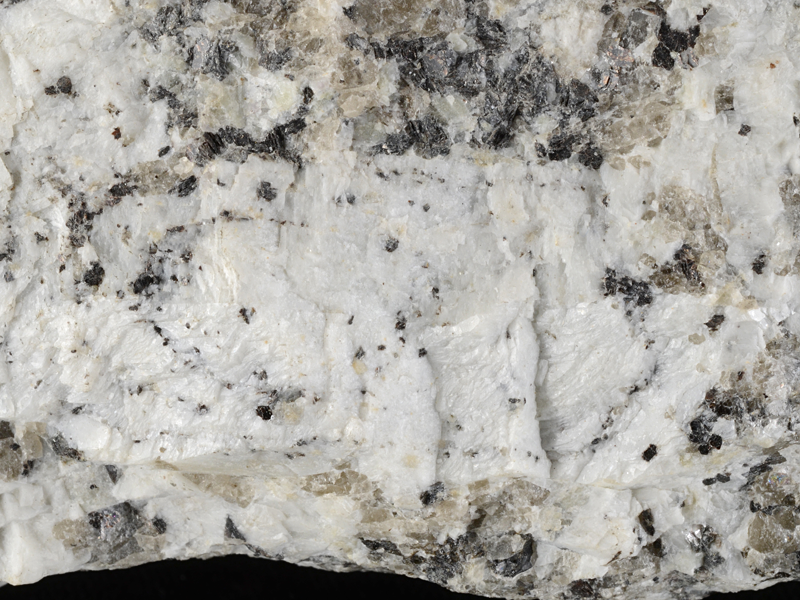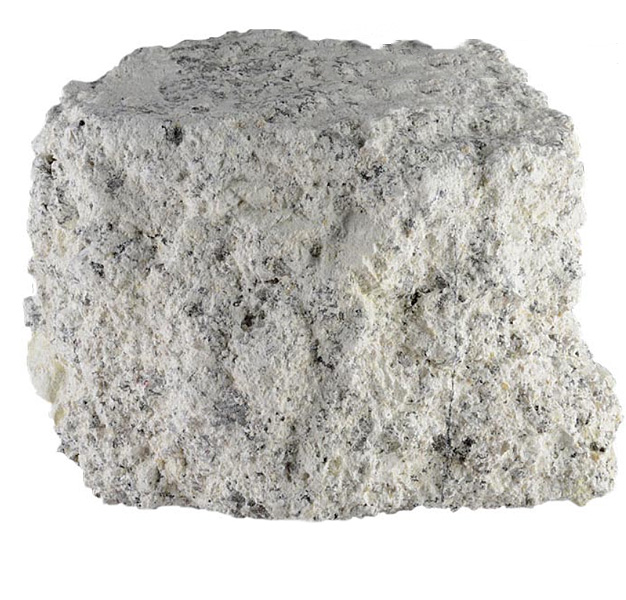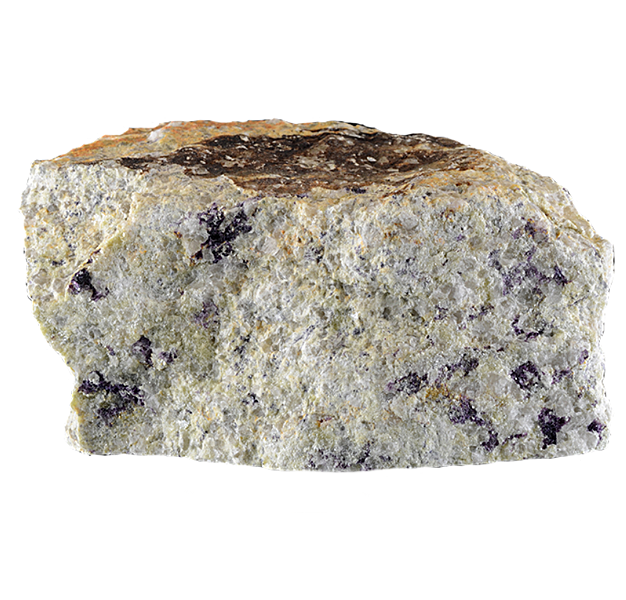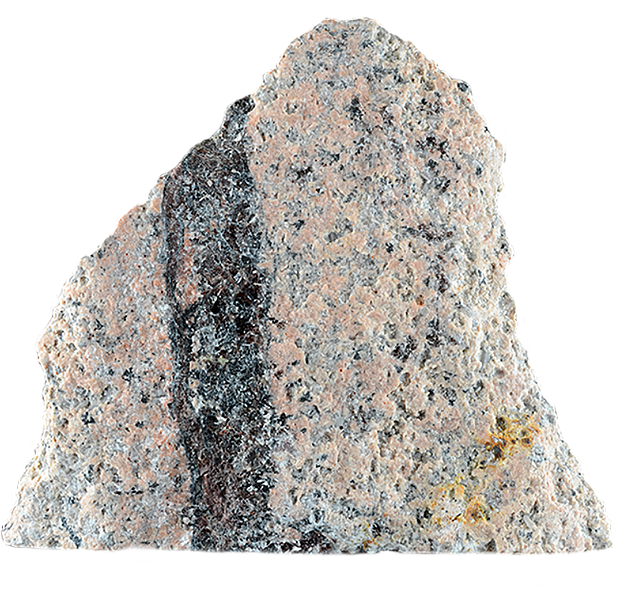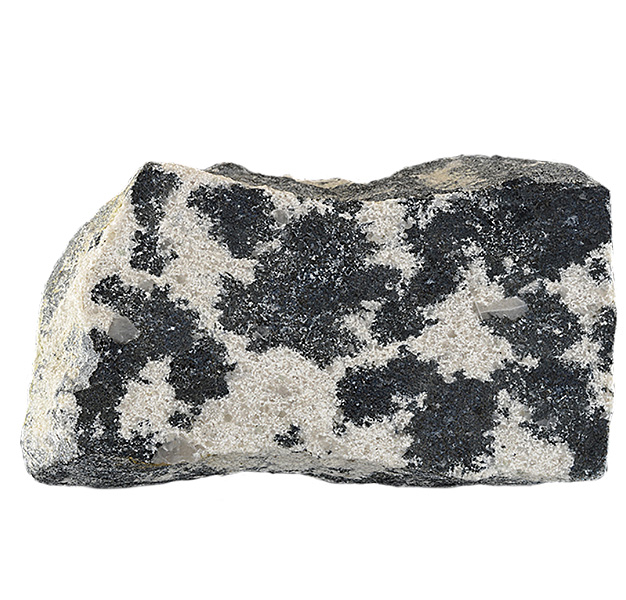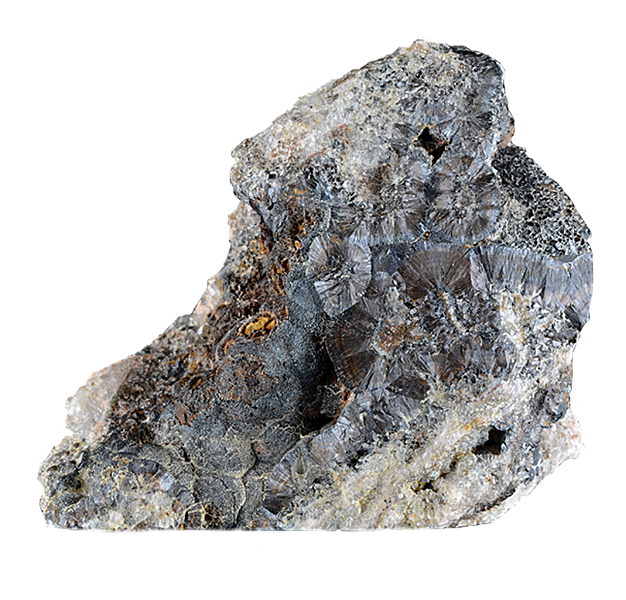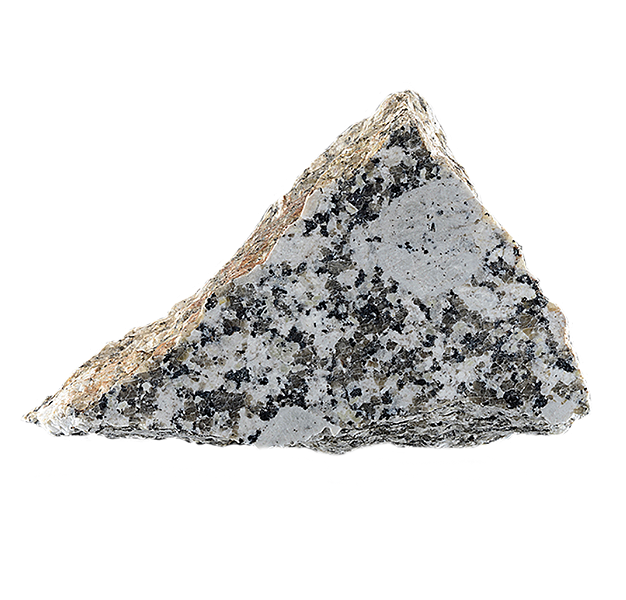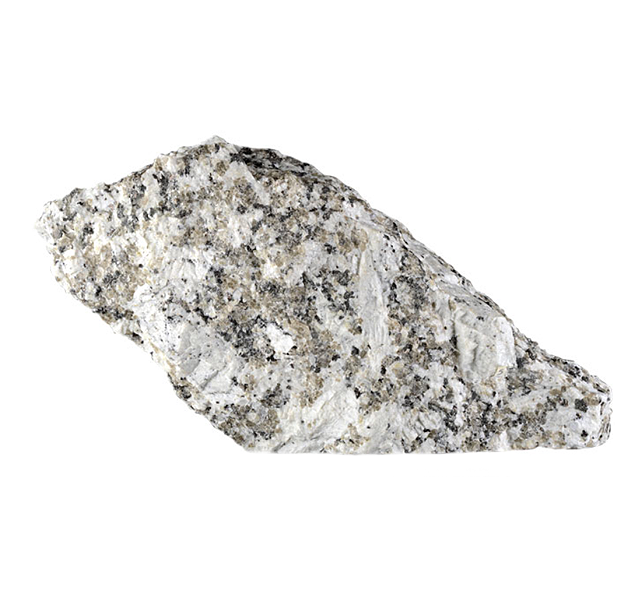
Fact sheet
This sample of granite comes from Luxulyan, St Austell, Cornwall. It is known locally as biotite granite, although the dark mica is the aluminous species siderophyllite. The granite actually contains two mica species - siderophyllite and muscovite. This granite represents part of the main mass of the St Austell granite, and it was this pluton that drove much of the heating and fluid infiltration of local rocks leading to further intrusions and mineralisation. Adjacent mineral deposits and the large clay pits were also the result of the hydrothermal fluid circulation surrounding the SW England pluton during its intrusion in the Permian period.
The thin section contains large plates of biotite showing alteration to chlorite, with lesser amounts of equally sized muscovite. Large plates of quartz show little deformation, orthoclase and plagioclase feldspar are both altered, plagioclase exhibits compositional zoning and orthoclase exhibits coarse perthite textures.
A case study of the St Austell granite complex in Cornwall, England, illustrating the range of rocks associated with a granite intrusion. The earliest part of the complex is a siderophyllite (biotite) granite containing muscovite and tourmaline typical of a SW England granite, with many primary magmatic features.
This early intrusion was followed by the intrusion of an evolved volatile-rich magma which was the driving force behind a series of intense hydrothermal processes as volatiles escaped from this magma and helped to establish an extensive alteration halo (aureole). Boron, fluorine and lithium (as well as water) played major roles in the formation of the second intrusion and in the associated hydrothermal processes. Igneous activity lasted around 18 million years from 282 Ma (siderophyllite granite) to 265 Ma (fluorite granite).
